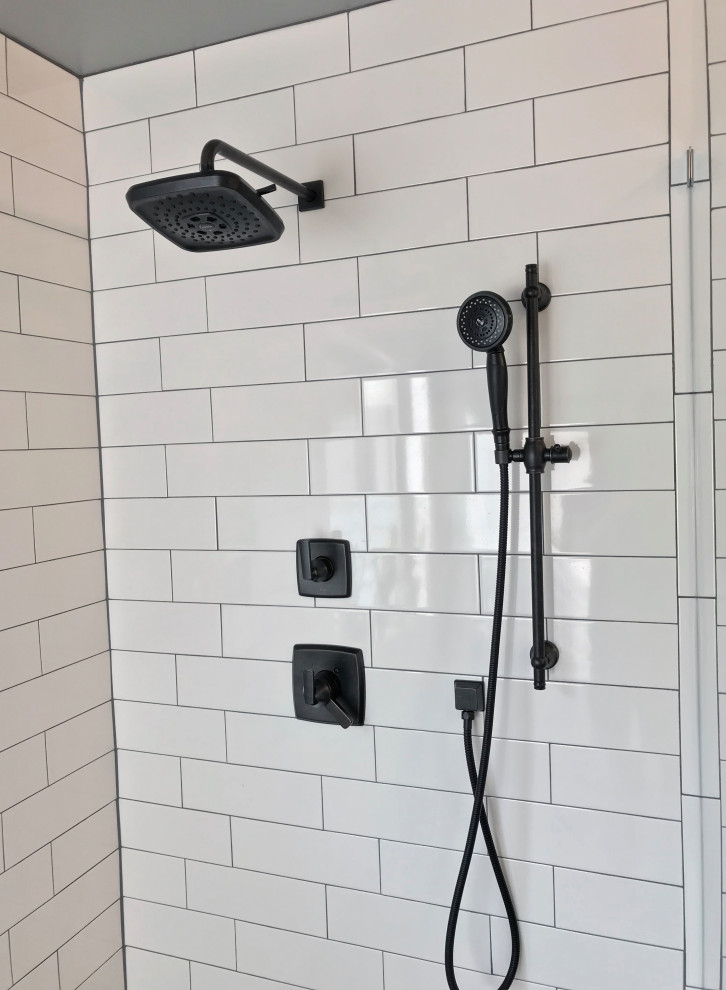5 Things No One Tells You about Shower & Bathtub Wall Surface Panels
5 Things No One Tells You about Shower & Bathtub Wall Surface Panels
Blog Article
{Visit Website Are you in search of facts and techniques concerning 6 Things to Know About When Hiring a Plumbing Services? We recommend that you clean your acrylic bathing product made of Delta ProCrylic or Acrylic with Innovex Technology with non-abrasive soaps and cleaners, such as: When it’s time to clean, always use a terry cloth towel, soft cloth or sponge to avoid scratching the acrylic surface. Don’t use abrasive scrubbing pads, steel wool or sponges, cause permanent damage to the acrylic material. If you use a drain cleaner or clog remover, be sure to rinse thoroughly with water so no product is left standing near the drain. Some chemicals and cleaners may deteriorate acrylic surfaces, causing cracks and, potentially, property damage. To avoid this, don’t use cleaning products that state on their label that they are not suitable for use on Acrylic, ABS, Polystyrene or Plastic. Be sure to check the label of any product before you apply it to the surface; it’s easier to avoid damage than to try to remedy it. Chemicals we do not recommend using to clean acrylic showers/tubs: When you’re ready to apply sealant, a little planning goes a long way. Pick up some painter’s tape and use it to mask off the seam to help make cleaning up easier. When you’re applying the bead, use a constant, steady speed to avoid an uneven finish. Use a caulk tool or a plastic spoon to work the sealant into the joint. Wetting the tool with denatured alcohol will help create a smooth finish. Follow the directions on the back of the tube for cure time. Certain chemicals and cleaners may deteriorate acrylic surfaces, causing cracks and, potentially, property damage. After you’re finished applying it, clean up the product surface and remove any excess sealant with denatured alcohol. Don’t use solvents (turpentine, lacquer thinner, mineral spirits, paint thinner, MEK, xylene, acetone, naphtha, etc.) that can wreak havoc on an acrylic surface. With a little care and consideration, you can prevent damage to your acrylic shower or tub. Keep a supply of soft cloths handy and remove any damaging products or abrasive scrubbing items from the bathroom to ensure they aren’t around when it’s time to clean. https://www.deltafaucet.com/design-innovation/inspiredliving/how-to-clean-acrylic-shower I was brought to that write-up about Finding the Right Plumbing Expert through an acquaintance on our other blog. Liked our posting? Please share it. Help others find it. Thanks a lot for your time invested reading it.
Polymer bathrooms, shower trays, and other acrylic shower room ware have become more common in restrooms in recent times. Not as long lasting and sophisticated as enamel and porcelain baths and components, they are much more economical as well as serve quite much the very same standard purpose. Some common instances of damage to acrylic shower room fixtures consist of discoloration, splits, holes, etc.Scratched shower or bath surface area
Acrylic shower room fixtures are not abrasion-resistant like enamel selections. They are much more susceptible to scrapes as well as much less resilient. Being an extremely soft material, acrylic scrapes can also be concealed without finish or filling. For these, you ought to look for expert assistance for your bath fixings. As an avoidance idea, prevent making use of rough sponges when cleansing. Rather, you ought to utilize an easy fluid cleaner with a soft pad.Chain reaction
Occasionally, people attempt to paint the entire surface area of their acrylic bath by themselves either since they do not like the color to conceal acnes. You should never use paint cleaner on acrylic bathrooms. Paint cleaners do not respond with the surface of steel bathrooms, they ruin acrylic bathrooms irreversibly.Bathroom Discoloration
With extended use of acrylic baths comes discoloration or discoloration. While some discolorations can be removed quickly, making use of unique chemicals, others require that the bathroom be resprayed. It is necessary to keep in mind that bleach or detergents do very little in removing such discoloration and also they may even aggravate it. Most times, these cleaning up representatives cause staining over time. Aromatherapy oils loosen up the dirt in many cases thus bring back the bath to its former magnificence. Cleaning up and also polishing likewise sometimes. For even more persistent spots, you will need a new layer of covering. This kind of fixing will require an expert.Cracked Acrylic Baths
The life expectancy of acrylic and also fiberglass bathrooms depends on 15-20 years for shower pans as well as bathrooms, normally. Splits in an acrylic shower tray are most likely amongst the easiest problems to repair for a repair professional. The most effective part is you get to see the outcomes almost immediately. This coincides for PVC, material, and also various other such products. A minute crack need to be attended to on schedule before it spreads out additional causing a lot more severe damage. While these can be chosen a budget plan tackily, a specialist can help you get it made with even more finesse for a cost. Quick house fixes can be finished with epoxy materials however if the outcome ends up inadequately, this would certainly make the repair work much more difficult for a specialist.
Acrylic bathrooms, shower trays, as well as other acrylic bathroom ware have become more usual in restrooms in recent times. You ought to never utilize paint remover on acrylic bathrooms. Paint cleaners do not respond with the surface area of steel baths, they damage acrylic bathrooms irreversibly. With extended usage of acrylic baths comes staining or discoloration. The life expectancy of acrylic as well as fiberglass bathrooms is up to 15-20 years for shower pans as well as bathrooms, generally.How to clean Acrylic shower
USE THESE NON-ABRASIVE CLEANERS
DO NOT USE THESE CLEANERS
Sealant Application Tips

Book A Service